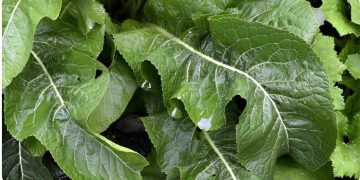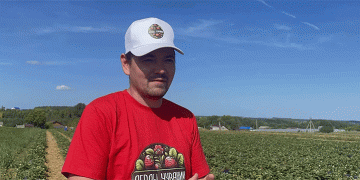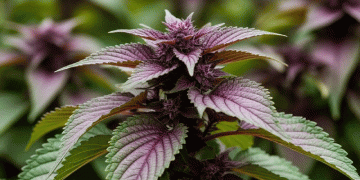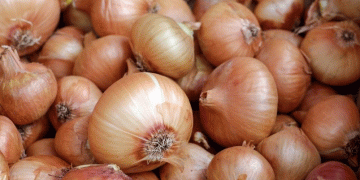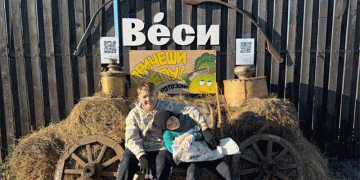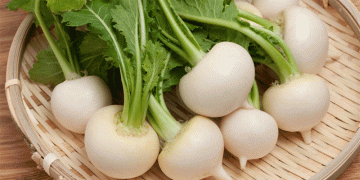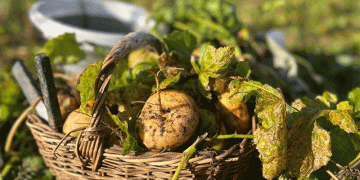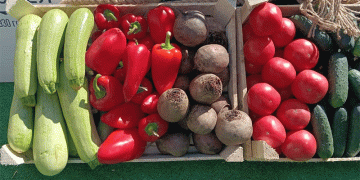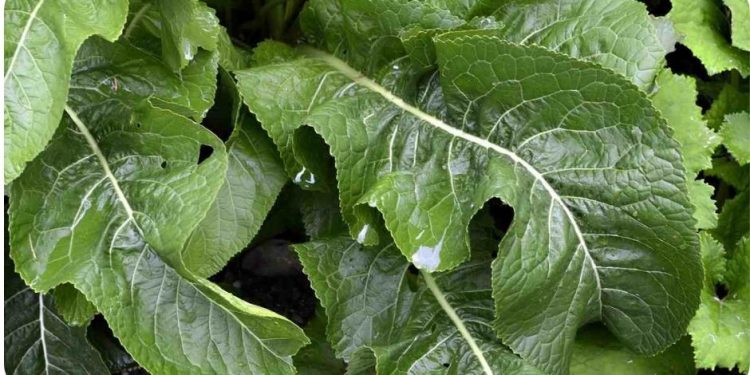Horseradish Farming in India
Hello friends, we are here with a new topic of “Horseradish Farming in India”. Horseradish is a perennial plant that belongs to the Brassicaceae family and its botanical name is Armoracia rusticana. Horseradish is a root vegetable plant, cultivated and used worldwide. It is a perennial plant that means once you plant it, you must get the roots out or you will have it next year. Horseradish is a hardy herb crop having large leaves, perennial and is grown for its pungent root, which contains oil with a strong pungent odor and hot, biting taste. The plant attains a height of about 0.6 to 0.9 meters when in flower. It is a hardy perennial plant and can be grown in cold climates, full sun, or light shade.
The Horseradish plant is a root vegetable plant and this root has multiple compounds that may provide health benefits like antibacterial and anticancer effects. It is best in the first year, so grow it in a deep pot, flexible bag, or other large containers. Usually, Horseradish is grown from root cuttings. When ordering seeds, try planting Horseradish in the spring when they arrive. The best time for planting Horseradish is spring. It is one of the most popular crops and is cultivated in the garden of almost every summer resident.
Origin and Distribution of Horseradish
Horseradish crop is a native of Eastern Europe in marshy districts, Southern Russia, and Eastern Ukraine but has become naturalized in North America and New Zealand. In India, Horseradish is cultivated in hill stations of South India and some areas in North India.
- Botanical Name – Armoracia rusticana
- Family – Brassicaceae
- Light – Sunny
- Soil – Well-drained, deep
- Fertility – medium
- pH – 6.0 to 7.0
- Temperature – cool
- Moisture – moist
- Plant Type – Perennial herb
- Exposure – Full sun to part sun
- Soil Type – Loose, rich soil
- Hardiness Zones – 3 to 9 (USDA)
- Companion plants – Potatoes, yams
- Native Area – Central Europe
Now Let’s get into the details of planting and Horseradish Farming practices.
A Step-by-Step Planting Guide to Horseradish Farming, Cultivation Practices In India
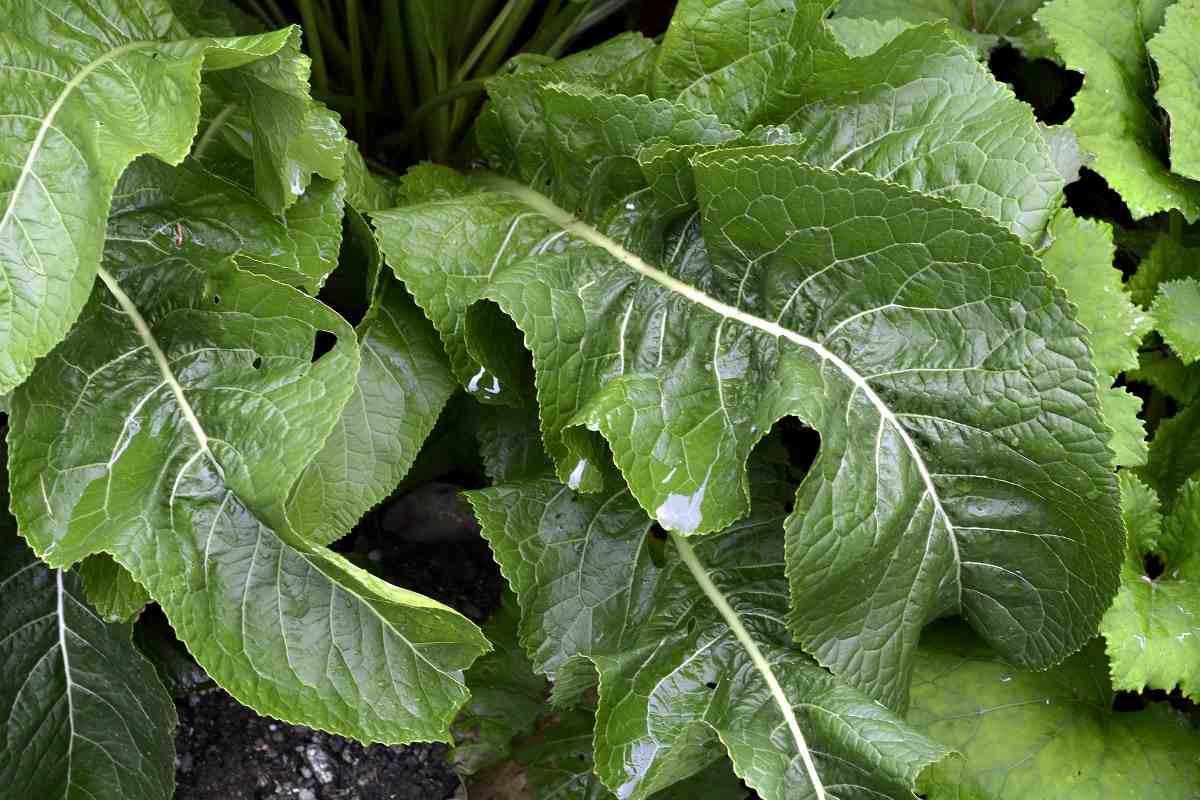
Recommended Varieties of Horseradish
Normally, there are two types of Horseradish available. The first one is ‘common type’ with broad crinkled leaves and roots of high quality and the other type is ‘bohemian type’ with narrow leaves and poor quality roots. The taproot is tuberous and cylindrical about 30 cm long and 18 mm in diameter.
Common Horseradish has broad and crinkled leaves with a superior root quality. However, it is more susceptible to disease.
Bohemian Horseradish has narrower and smoother leaves. Also, Bohemian Horseradish is disease resistant but has a slightly lower-quality root.
Conditions Required for Horseradish Farming
The Horseradish plant is a long-day plant, whose favorable conditions are those of moderate climate, with average rainfall for such regions. In the climate conditions, the root tolerates low-temperature levels and does not freeze at lower temperatures. Sunny locations with a large amount of moisture are favorable to it. Based on the content of soil moisture, soils with 70% humidity suit it most. On the occasion of large fluctuations of moisture in soil and air, the whole plant becomes sensitive. The areas with cold winters provide the needed rest period for roots, and long summers make favorable conditions for their crop growth. The highest crop yields are achieved in fertile and moist soils with good drainage. For Horseradish cultivation, the most suitable soil types are chernozems, meadow black soils, alluviums, and cambisols with a pH level of between 6.0 and 7.0. The physical component of soil structure is important, and it is supposed to be crumbly, which allows permeability and good soil moisture accumulation.
A certain amount of organic matter in the soil is also preferable for Horseradish farming in India. For Horseradish cultivation, shallow soils with a hard substrate are not suitable. Horseradish will be cultivated in full sun but will tolerate some shade. Cabbage butterflies will attack Horseradish plants but are easily picked off. The plant leaves while beautiful and green can grow about 3 to 4 feet tall. The Horseradish leaves are long, with the main running central through the entire leaf. It doesn’t like wet feet; it likes well-drained soil. It is not a radish but a member of the mustard family with deep roots. The best Horseradish roots are grown for one year and harvested after the first good hard frost.
Soil and Site Preparation for Horseradish Farming
For cultivating Horseradish, a deep, rich loam or sandy loam soil is suitable. A well-prepared and thoroughly pulverized soil is necessary for Horseradish production of straight and strong roots.
A well-drained, loose, garden loam or sandy, alluvial soils allow for the healthy growth of Horseradish roots. Before planting Horseradish be sure to work the soil deeply for the best results; a depth of 10 to 12 inches or deeper is recommended. Heavy soils filled with clay and rocks or a thin layer of soil can restrict root development and result in a poor yield. It needs a soil pH level of 6.0 to 7.0. An application of manure preliminary to planting can enhance the fertility of the soil.
Horseradish plant is adaptable and tough, but providing it with the proper growing conditions will produce the biggest, sweetest, and most flavorful roots. Plant Horseradish in a location that gets full sun. It will tolerate partial sun, but yields will not be as good.
Horseradish plant grows best on rich, deep friable loam or sandy loam soils rich in organic matter. It needs good drainage to produce quality roots. It grown on soils with shallow, hard subsoils frequently produces highly branched roots of poor quality. The Horseradish plant needs to have high potassium (K) and moderate phosphorous (P), with low to moderate annual nitrogen (N) requirements. A balanced application of NPK must be broadcast and incorporated before planting. After that, apply at least 50 pounds per acre of nitrogen as a starter fertilizer, with phosphorus and potassium levels adjusted depending on a soil test. If Sulphur levels test low on the site less than 10 pounds per acre, apply 15 to 25 pounds of elemental Sulphur per acre. Though this is a low level of Sulphur application, it can decrease soil pH level, which should be monitored for future crops. Horseradish likes cool weather conditions. Its ideal daytime temperatures range from 7 to 23°C.
You should not miss this: Cold Pressed Oil Project Report.
Propagation for Horseradish Farming
Usually, Horseradish is vegetatively propagated by dividing crowns or from root cuttings. It can be grown from the supermarket-bought root as it is not treated with any chemicals that affect plant growth. Then, the disadvantage is that the variety and characteristics may not be known. Root pieces are small which grow from the main root. As the Horseradish root exhibits polarity, it is very important to make a note of which end of the set is the top and which is the bottom to plant the piece in the correct orientation. For doing this use a straight cut across the top end of the set and an oblique cut at the bottom. If planting by dividing an established crown, the plant must be carefully dug from the soil and split into four equal pieces each with some leaf and root.
The following technique for taking root cuttings works well for the grower who is only concerned with propagating one or two plants. Begin by finding a 6-10 inches long section of root that includes at least one bud. It is important to plant the root in the same way it came out of the ground, so mark the top with a straight cut and the bottom with an angled cut. Next, remove any branching roots that may exist.
Also, established Horseradish plants can be propagated by using crown division. Cut the crown into sections that include the upper leaves of the plant and at least 1 crown bud. Replant the sections in the desired location and seeds can be planted, but they are not always reliable.
Sowing Process for Horseradish Farming
- Horseradish roots plant in the early spring season as soon as the soil can be worked.
- Select a location in full sun with moist, fertile, and medium-heavy soil is recommended. It is a perennial crop, so select a planting site where the roots may spread undisturbed.
- Prepare the bed by turning the soil under to a depth of about 8 inches and set plants 18 inches apart in rows about 30 inches apart. Plant with the thick end up, either in an upright or horizontal position.
- When planting in a vertical position, a dibble 1 inch in diameter can be used to make the hole in which to plant the root. Cover the roots with 3 inches of soil and plants may take 4-6 weeks to emerge.
Planting and Spacing Requirements for Horseradish Farming
Usually, the Horseradish plant is propagated by using a crown or root cuttings. Though, the cuttings are obtained from the side roots, which are trimmed off in the preparation of roots for the market. Also, it is propagated from crowns. The propagation roots should be 10 to 20 cm long and the size from 65 to 1.25 cm in diameter. The cuttings are planted in a slanting manner 7.5 to 10.0 cm below the soil surface. Then, the soil around the cuttings is well packed.
For areas with short growing seasons, use the crown method for propagating Horseradish. Dig a plant and then split the root into 4 equal pieces containing some leaf and root tissue. Let the wounds heal for several days before planting, with the crown positioned about 1 to 2 inches below the soil surface.
Root cuttings are pencil-sized root pieces collected from larger roots. After that, cut the end close to the main root square and the other end at an angle. Plant the square end of the root higher than the angled end and plant these root pieces about 2 to 3 inches deep and 1 foot apart.
Manures and Fertilizers Requirement for Horseradish Farming
The soils must be given a dressing of well-rotted FYM (farmyard manure) before ploughing. Green manuring and commercial fertilizers can also be used for plant growth. Fertilizers containing about 50 lbs each of nitrogen and potash and 70 to 100 lbs of phosphorus per acre are sufficient for plant growth. A fertilizer high in potash seems essential for proper root development.
Irrigation Requirement for Horseradish Farming
Irrigation is required during dry periods, particularly in late summer to fall, can improve marketable yield depending on soil moisture-holding capacity. It is quite drought-tolerant. If underwater, plant roots become woody and have a weak flavor. If overwatered, roots become soft and have a strong flavor. Water once a week, 1-2 inches.
In case if you miss this: Growing Herbs Hydroponically.
Plant Care in Horseradish Farming
- Horseradish plant has long taproots, so well-prepared soil is very important since it is hard to correct the condition once a perennial plant is established. Also, create good soil conditions in the garden bed by turning in a couple of inches of organic matter.
- Fertilize the plant by adding organic compost to the planting bed every month.
- Horseradish ideally is grown somewhere open with ample sun exposure, but a slightly shaded area is also acceptable. And, avoid planting Horseradish near walls or fences that might strangle root growth.
- Horseradish is a perennial plant, so it will come back every year. The Horseradish plant reaches its peak in size, so wait until late fall to harvest Horseradish crops.
Pests and Diseases Management in Horseradish Farming
Horseradish is susceptible to various foliar diseases. White rust is an important disease in Horseradish that limits root growth due to foliar infection. White rust disease can be managed effectively with fungicides and the use of resistant varieties.
Horseradish can tolerate some pest damage to its leaves without affecting crop yield and root quality.
Flea beetles, caterpillars, and diamondback larvae all are Horseradish plant diseases. Growers are more concerned with insects that cause root damage. Crop rotation and the use of clean root sets can also help to control this pest.
The beet leafhopper indirectly causes harm because it is the vector for the brittle root virus, a pathogen known as Spiroplasma citri. Curled yellow color leaves, sometimes known as curly top, show up within weeks after the plant is infected and daytime wilting can occur. As the disease progresses it moves underground and then resulting in discolored roots that produce lower crop yields. For controlling this disease avoid using infected rootstock.
Bacterial Leaf Spot – The signs of Bacterial Leaf Spot disease are small translucent spots with a broad yellowish edge and become irregularly circular with a reddish center. It thrives in cooler temperature levels. Remove infected plants and do not plant Horseradish in the same location. Avoid overhead watering and do not work around plants when they are wet.
Bacterial leaf spots will create translucent spots on the plant leaves and then spread across the leaves. Then, this will eventually cause the leaves to curl up and die. The spots will grow after lots of rain. To prevent this Bacterial leaf spot disease, remove debris from around your plants while they grow and immediately after harvest to prevent the disease from overwintering.
Cercospora Leaf Blight – Small flecks which develop a yellowish halo appear on the plant leaves and they cause the plant leaves to die. Remove infected plants and destroy all plant debris. It will cause tan spots with a lighter center on the leaves. Remove infected plants immediately and then destroy them to prevent further spread of the disease. To prevent this problem, avoid working with the plants when they are wet. Also, treat seeds with hot water to eliminate the fungus before planting them.
Root Rots – Some pathogens cause root rots in Horseradish. For controlling this problem, practice crop rotation and do not plant related crops in the same area for several years. Pull up and then discard infected plants. Make sure your soil has excellent drainage.
Rust – Several fungus diseases that cause rust-colored spots on foliage and stalks. Burpee Recommends: Plant resistant varieties and practice crop rotation. Remove infected plants.
Turnip Mosaic Virus – This disease causes ring spots and mosaic or mottling on the leaves and black streaks on the leaf stalk. Remove infected plants and discard.
The brittle root will inhibit the plant’s growth, and then it will cause chlorotic leaves which collapse and dry out. The plant roots will become brittle, and they will be discolored. To control this Brittle root problem use insecticides.
Some of the common pests affecting Horseradish include the cabbage looper and flea beetle.
Cabbage loopers will cause holes in the leaves of the Horseradish plant. The caterpillars are green and have white color lines on each side of their body. Handpick the larvae from the plants, or apply Bt (Bacillus thuringiensis) to kill the younger larvae. These worms are green with a white stripe on either side, about 1 to 1.5 inches long. Handpicking can help prevent their laying eggs on the plants.
Flea beetle will cause small holes in plant leaves, especially for younger plants or seedlings. This can reduce the plant’s development and even kill the plant if the damage is severe enough. Then, apply mulch to prevent the beetles from reaching the soil’s surface and apply neem oil to help organically control the problem. Rotate crops with plants in a different plant family and use floating row covers to prevent damage.
Aphids – The symptoms of aphids are greenish, red, black, or peach-colored sucking insects that can spread disease as they feed on the undersides of leaves in the Horseradish plant. Attract natural predators into the garden like lady beetles and wasps which feed on aphids. Also, you can wash them by using insecticidal soap.
Leafhoppers – Leafhoppers cause injury to plant leaves and stunt growth. They spread disease. Remove plant debris and use insecticidal soaps.
When and How to Harvest Horseradish
The plant roots are harvested by ploughing the whole bed and the tops and the side roots are removed. Though, cuttings are then made from the basal roots and the marketable products sold or stored. The marketable roots after harvest are cleaned, washed, and then packed. The root for sale must be straight 20 to 25 cm long and 3 to 5 cm in diameter. The plant roots can be stored in a cool, moist storehouse or can be kept in good condition for several weeks in moist sand. Harvest all root before the ground freezes otherwise new Horseradish plants will spring up the following year.
The Yield of Horseradish
The yield of Horseradish can be approximately 25 to 100 quintals per hectare.
Commonly Asked Questions about Horseradish Farming
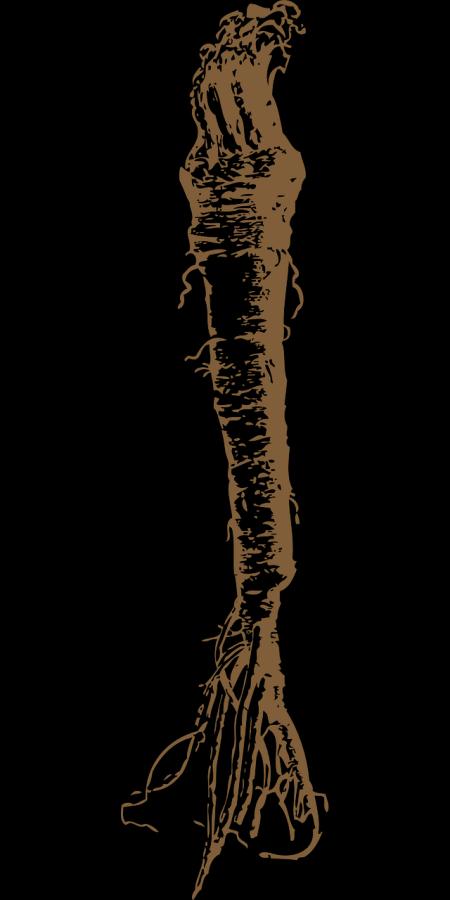
Are Horseradish and radish the same?
They are part of the Brassicaceae family of vegetables and they are both roots, however, they are different plant species. Armoracia rusticana is the scientific name for Horseradish while the common radish is called Raphanus sativus.
Is Horseradish growing in containers?
If you are worried about Horseradish taking over your garden, growing it in a container can be a better option for you. You will need a sizable container, with at least a 30-inch depth for the roots to grow in. And, plant the roots the same as if you were planting them in the ground. Growing Horseradish in containers requires more frequent watering and monthly fertilizing.
How long does it take Horseradish to mature?
Horseradish is planted in the spring season for harvesting in late fall. Horseradish recommends the plants be dug each fall eliminating the chance for them to get out of control.
Is Horseradish easy to grow?
Horseradish is easy to grow in sun or partial shade, a perennial crop. Horseradish roots are harvested in the fall season, winter or spring, and then peeled and ground before being enjoyed as a peppery condiment.
